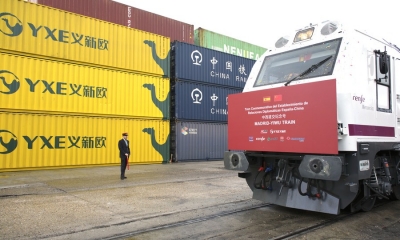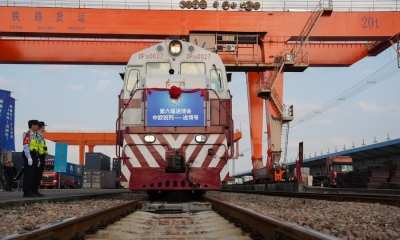Why Weaponizing Semiconductor Supply Chains Is Detrimental to the U.S.

U.S. firms greatly benefit from China’s growth and development through the immense value semiconductor sales bring to U.S. chip giants.
Recently, the CEOs of leading American chipmakers, including Intel, Qualcomm, and Nvidia, met with U.S. officials at the White House. The main topic of discussion was U.S. semiconductor restrictions against China, which concern these companies. According to Reuters, China has the largest semiconductor market in the world, comprising $155 billion and over one-third of the world’s total market share. As a rapidly developing country, China has proven to be a boon for American companies.
However, in recent years, the U.S. government has made a concerted effort to sever and isolate China from the global semiconductor and chip supply chain. The U.S. is attempting to contain China’s technological development to pursue its own strategic hegemony. In doing so, it has sought to rewrite the global semiconductor supply chain in its favor, actively reversing globalization and emphasizing “geopolitical control” of supply chains to eliminate perceived competitors.
Consequently, the U.S. has blacklisted thousands of Chinese companies through its Commerce Department’s Entity List, which prohibits U.S. firms from exporting technology to blacklisted companies. Additionally, it has coerced third-party countries to agree to measures targeting semiconductor-making equipment and urged countries to veto or cancel Chinese investments in chip firms. The U.S. has also unleashed large-scale subsidies to incentivize chip firms to build capacity within the United States, even at the expense of chip-making allies such as South Korea and Japan.
However, this strategy is neither profitable nor productive. The model of industry globalization, created by the U.S. in the 1980s, aimed to reduce inflation and increase business efficiency. This model actively sought cheaper markets, leading to the outsourcing of manufacturing to developing countries. This allowed countries, such as Japan and South Korea, to become competitive chipmakers by constructing supply chains in Asia, with China emerging in the 1980s and 90s as a low-cost manufacturer.

By imposing broad export controls, the U.S. hopes to hobble China’s technological development. Yet, restructuring semiconductor manufacturing at home and cutting off the Chinese market will impose significant costs on American firms.
Manufacturing in the U.S. is not cost-effective, as building an entire supply chain requires a complex assortment of materials, components, and personnel, which, by U.S. standards, will be more expensive across the board. Furthermore, without access to the Chinese market, the returns on such investments will never be as lucrative or affordable.
The likely outcome is that the U.S. “cuts its nose off to spite its face,” excluding itself from the Chinese market in a way that fundamentally impacts its own competitiveness.
The claim that U.S. firms selling semiconductors in China should be exclusively interpreted in “military” terms is misinformation propagated by American elites. It fails to appreciate the wider reality that China’s primary need for semiconductors is growth and consumption.
Contrary to what U.S. politicians say, this is not a zero-sum game rigged in favor of China. U.S. firms greatly benefit from China’s growth and development through the immense value semiconductor sales bring to U.S. chip giants. Instead, the supply chain is becoming subordinated to geopolitics in a way that will indeed harm, rather than support, the long-term interests of the U.S. and its companies.
 Facebook
Facebook
 Twitter
Twitter
 Linkedin
Linkedin
 Google +
Google +







